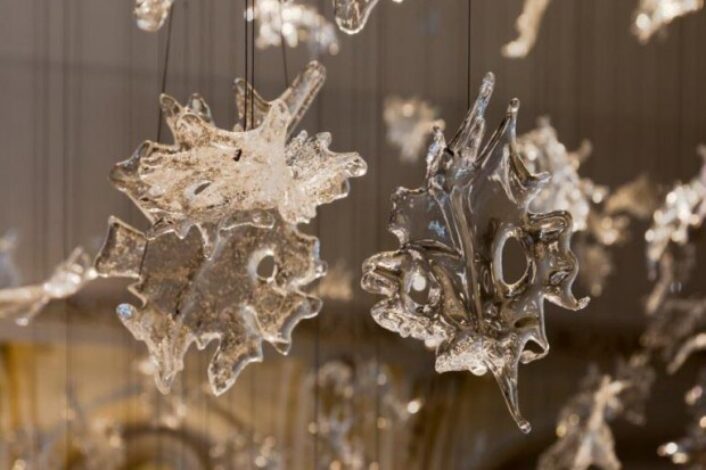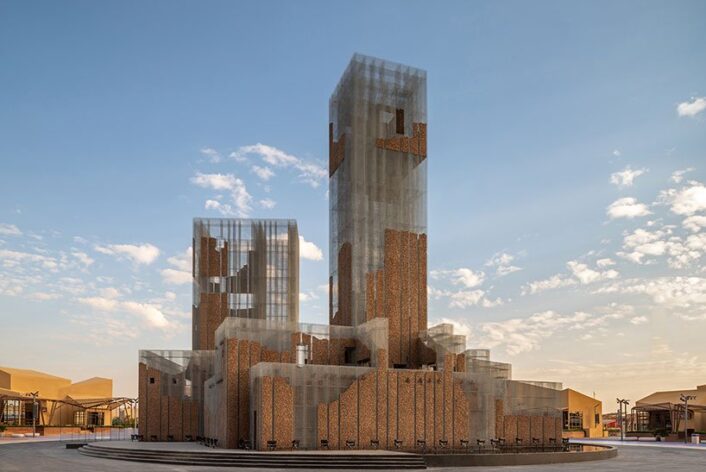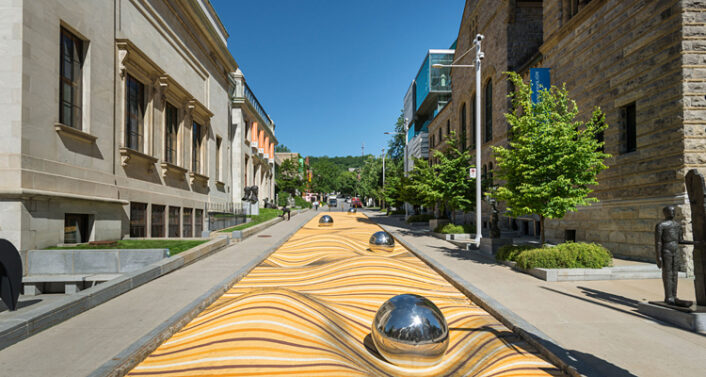Fine Art
Jacob Hashimoto
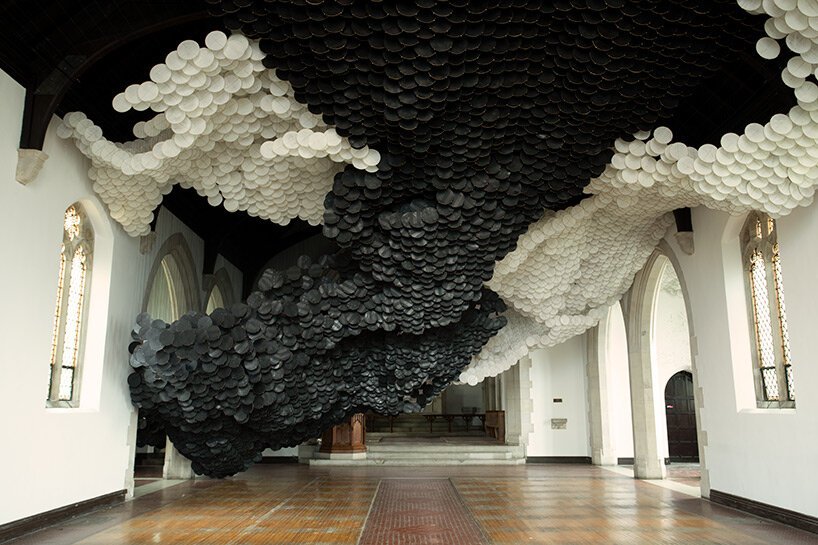
“The Eclipse,” 2017-18. Bamboo, screen prints, paper, wood, cotton, and acrylic. From an exhibition at St. Cornelius Chapel in Governors Island in New York.
Image courtesy of Design Boom, photographed by: Erin O’Hara
Jacob Hashimoto is a New York City-based artist that creates multi-layered and complex vibrant compositions. The artist grew up in rural Colorado, among “onion fields and big skies.” Growing up in an environment that was abundantly “open,” Hashimoto developed an interesting perspective. He says (courtesy of Design Boom), “it makes you see culture and cultural patrimony through an oddly shaped lens.”
Hashimoto concurs that he was largely influenced by his upbringing. Half-Japanese and half-European-American, the son of an English professor and school social worker thinks about art’s purpose and utility in an interesting way. He wants his art to speak to a broad and diverse audience… in that, he considered his work bountiful.
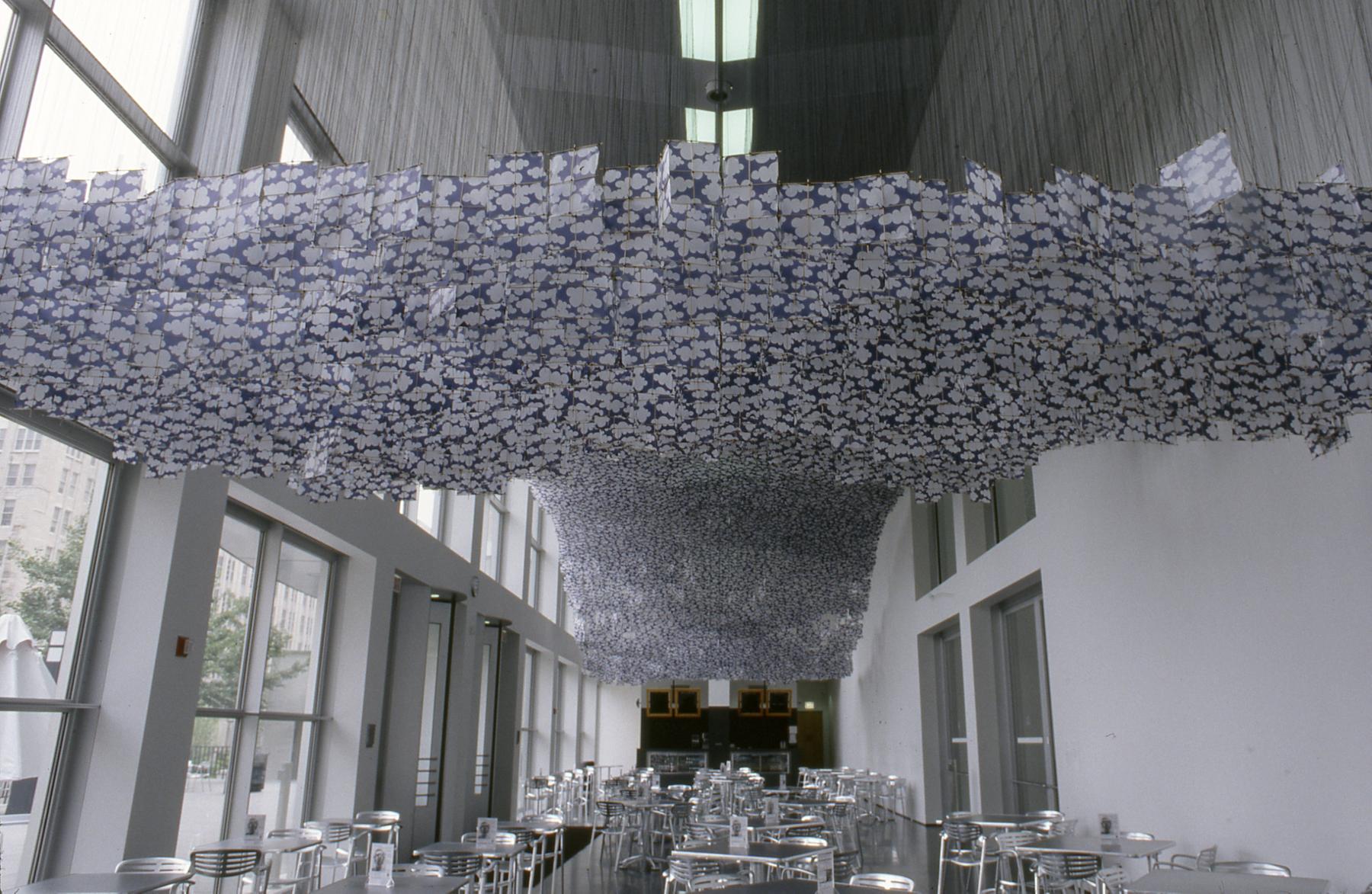
“An Infinite Expanse of Sky (10,000 Kites),” 1998.
Hashimoto was asked to fill the Museum of Contemporary Art in Chicago’s café space; he chose to hang 10,000 miniature bamboo and velum kites hung from the ceiling. Modeled after northern Japan’s traditional kite styles, these elegant pieces undulate effortlessly in the MCA’s ventilation system’s airflow.
Image courtesy of: MCA Chicago, photographed by: Joe Ziolkowski
Hashimoto started at the School of the Art Institute of Chicago with plans to become a Minimalist painter; however before too long, he had reached his creative max. His father, an educator, advised him to continue attending class all the while “making things with his hands.” The elder Hashimoto suggested that his son make model airplanes, but Hashimoto decided to build kites which he hung on steel wires in front of his paintings.
Graduating school in 1996, Hashimoto created his first installation in his apartment. For an entire year he hand-crafted 1,000 small, round pieces from vellum, bamboo, and thread. As more and more people saw his innovative work, his star grew and before too long, he got the commission to install an enormous version of the kites at the Museum of Contemporary Art in Chicago. “Infinite Expanse of Sky (10,000 Kites)” was groundbreaking for Hashimoto.
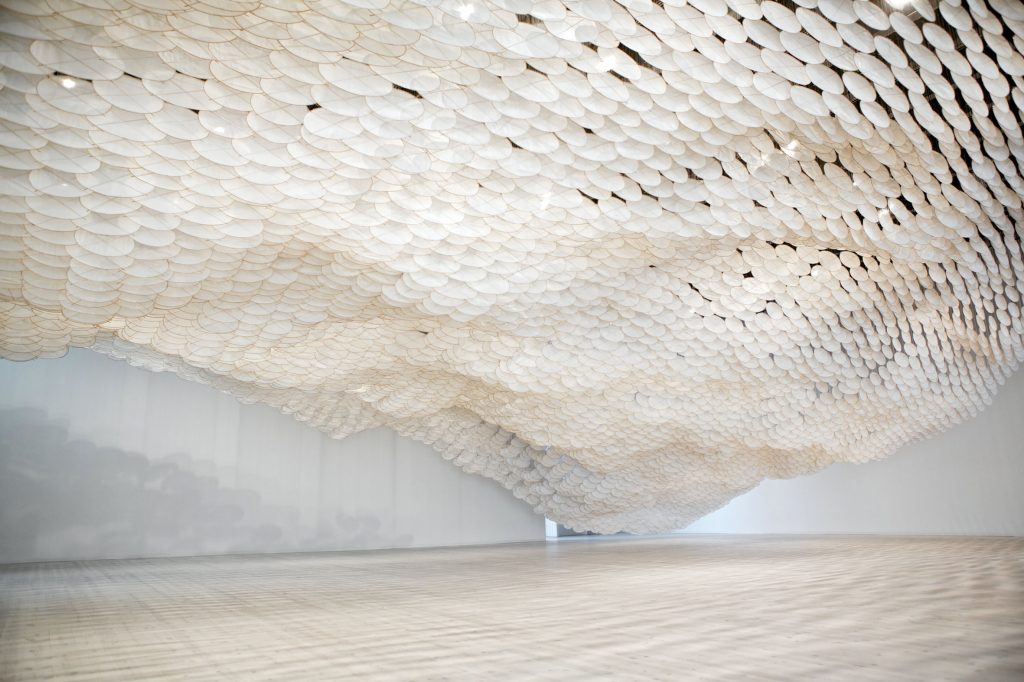
“Superabundant Atmosphere,” 2005. Silk, bamboo, and Dacron.
Image courtesy of: Sculpture Art Magazine
As Hashimoto’s pieces grew in size, his way of work evolved and he started to use 3-D computer modeling to design new pieces. New industrial methods however did not decrease the amount of physical work; the artist assembles and draws everything that goes into making each sculpture what it is.
Perhaps it was growing up in a liberal, artsy home that left a lasting impression on Hashimoto’s artistic and personal philosophy. Most important, he says, is that he understood it is vastly important to work towards a lifetime of learning. In the studio, Hashimoto is always educating himself and teaching…this also includes his studio staff as they teach themselves new techniques and are constantly learning from each other.
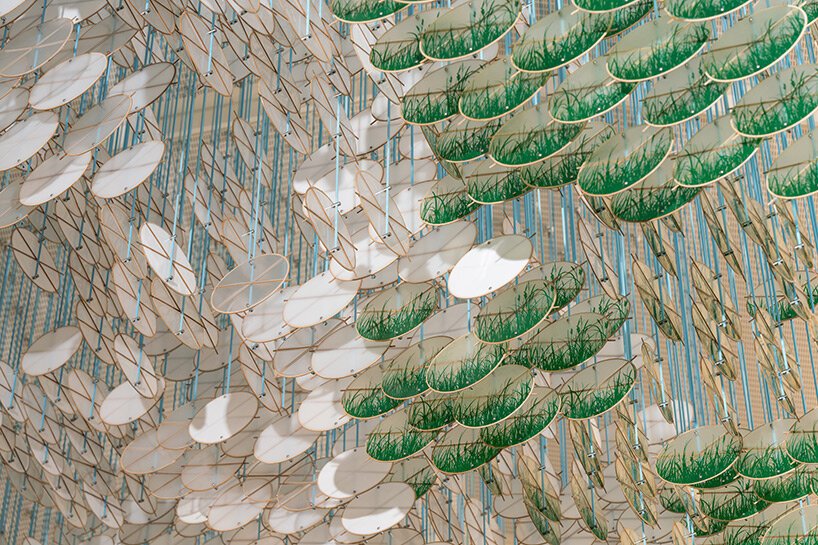
“The Sky,” 2020. Made from bamboo, resin, uv prints, screen prints, and fiberglass rods. The installation was displayed at Portland International Airport.
Dimensions are: 40″ x 30″ x 18″
Image courtesy of Design Boom, photographed by: Mario Gallucci
The kites are sourced from a dragon-kite manufacturer in China. Initially, Hashimoto taught himself how to make the kites. A time-consuming process, it is necessary to heat the bamboo and lash it together. However with only one assistant, this was not feasible as it took way too long. The artist started searching in Weifang, the historical center of Chinese kite-making, and found a company that was still versed in making traditional kites. He commissioned them to make the bamboo rings with the two cross-sticks.
The kites’ paper comes from Japan; it is a type of rayon paper that is the foundation for everything Hashimoto does. Traditionally, the paper was used for archival document repair and other restoration work. Hashimoto buys rolls of the paper from the manufacturer and soaks the sheets in acrylic primer. Then, the artist drapes the sheets over the frames and lets them dry in the studio. Once they are dry, the sheets are cut into what becomes the first layer.

“The Steady Breathing of The Land,” 2015. Made from bamboo, Dacron, paper, acrylic, nylon, and pigments.
Dimensions are: 244 cm. x 28 cm. 20 cm.
Image courtesy of: Abitare
For the past twenty years, Hashimoto has refined his unique artistic forms which draw inspiration from Western traditions of painting and sculpture, the language of today’s increasingly digital age, and centuries-old techniques of Japanese construction. He revels in making mistakes…which are not actually “mistakes.” He says, “I think that the biggest thing that I need is more creative time. More time to make mistakes.” We hope you get that time, Hashimoto…because we know the result will be well worth it!
